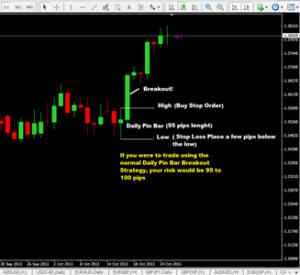Understanding the Accumulation Distribution Line: A Comprehensive Guide

The https://forexhero.info/python-linear-optimization-package/#toc-0 indicator is a useful tool for measuring buying and selling pressure in the market. Plus, it is a fantastic indicator for confirming or contradicting current trends. Remember to use the A/D indicator in conjunction with other technical tools. This way, you could be more confident in your next trading move. Volume precedes price — this is the cardinal rule of using the Accumulation/Distribution Indicator.
- Third, create a running total of Money Flow Volume to form the Accumulation Distribution Line (ADL).
- Originally, Marc Chaikin referred to the ADL indicator as the Cumulative Money Flow Line.
- If the close is in the higher range zone then the volume is said to have been positive, if the close is in the lower range zone then the volume is said to have been negative.
- This results in higher stock prices and, consequently, increased profits for those who are able to capitalize on this trend.
- Both of these technical indicators use price and volume, albeit somewhat differently.
- The one who developed the A/D indicator was the famous trader and analyst Marc Chaikin.
The aim is to read the line’s direction and determine the buying or selling pressure behind the underlying trend. For example, when the asset price is on the rise, but the A/D indicator is falling. It can indicate that the accumulation or buying volume is not strong enough to support the rising price. These circumstances could mean that a price drop is imminent in the short term. The accumulation distribution indicator does not factor in the previous close. Instead, it focuses on the proximity of closing price relative to stock’s high-low range for the given period (day, week, or month).
Indicators A ~ C
Hence, one can estimate the trading position as per potential price movements. The A/D line also spots price-volume divergences, which helps traders confirm the trend’s strength and sustainability. In conclusion, the Accumulation/Distribution Line is a valuable technical indicator for assessing money flow into and out of a security. It can help traders identify trends, potential reversals, and confirmations of price movements.

Volume is in effect reduced unless the Money Flow Multiplier is at its extremes (+1 or -1). The multiplier is +1 when the close is on the high and -1 when the close is on the low. All volume is positive when +1 and all volume is negative when -1. At .50, only half of the volume translates into the period’s Money Flow Volume.
adline
If the close is in the higher range zone then the volume is said to have been positive, if the close is in the lower range zone then the volume is said to have been negative. By combining the western technical analysis along with Japanese candlestick charting techniques, the AD line could be used to capture a trend successfully. In Figure B, at points 4, 5 & 8 one would have been able to take advantage of the uptrend & downtrend.
If the line is falling, it denotes a market in the distribution phase. In either case, be sure to confirm the trend direction with other technical indicators before taking up a position on the asset you’re considering. In this way, traders can predict the security’s future price trend as well as potential reversals. Making those predictions with reasonable accuracy allows traders to go long or short on a security at the appropriate time. The Accumulation/Distribution Indicator (A/D) is an indicator that any technical trader should understand.
Using the A/D Indicator with Other Technical Indicators
A/D can move in the same direction as price changes or in the opposite direction. This public indicator helps you to find as many divergences with as many indicators you like, without the long hassle of knowing and coding the divergence yourself. Just replace the “Divergence Condition” with your formula and give it a title in the second step, everything simply illustrated to someone without any coding experience! Similar concepts apply if a price closes within the lower half of a period’s price range.
Clearwater Analytics Earns Composite Rating Upgrade Investor’s … – Investor’s Business Daily
Clearwater Analytics Earns Composite Rating Upgrade Investor’s ….
Posted: Mon, 12 Jun 2023 07:00:00 GMT [source]
The accumulation/distribution indicator (A/D) is a cumulative indicator that uses volume and price to assess whether a stock is being accumulated or distributed. The A/D measure seeks to identify divergences between the stock price and the volume flow. The Accumulation/Distribution Line (A/D Line) is a popular technical indicator that helps investors and traders measure the cumulative flow of money into and out of a security. Marc Chaikin developed it in the 1970s to provide insights into financial assets’ supply and demand dynamics, including stocks and commodities. The primary rule of the A/D indicator is that stock volume precedes stock price.
What is accumulation and why is it important?
Accumulation occurs when the quantity of something is added to or increases over time. In finance, accumulation more specifically means increasing the position size in one asset, increasing the number of assets owned/positions, or an overall increase in buying activity in an asset.
